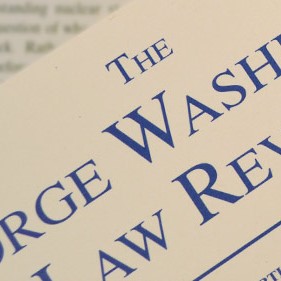William E. Forbath · September 2010
78 GEO. WASH. L. REV. 1191 (2010)
Barry Friedman has written a wonderful book. Brilliant in its narrative detail, The Will of the People ranks among the best one-volume histories of the Supreme Court in United States politics. It recounts two centuries of a complex saga in a way that is sprightly and learned, readable and deep. It rests on formidable primary research and distills and synthesizes a great deal of important work in several fields: American political and constitutional history, constitutional theory, and political science. The Will of the People also sets out its own important and provocative theses, about which this Essay offers a few critical reflections.
The overarching story is one of a happy marriage. After some stormy, troubled years, the Court and the People work out a modus vivendi, a “relatively quiet equilibrium.” The Court provokes the People to focus on constitutional issues; the People do so, and when their considered views clash with the Court’s doctrines, the Court gets the message and alters its doctrines to reflect the People’s will. Over time, the Court became less provocative and less inclined to stray far from mainstream public opinion. Thus, over the course of the nineteenth century, the Court engaged in epic battles against powerful elements in the polity and broadly supported public policies.
By comparison, the New Deal contest, for all its sound and fury, was a milder fray. But the New Deal taught the Court a lesson about holding out too long. The Court’s backing and filling in respect of Roe v. Wade illustrates how well the Court learned that New Deal lesson. By now, Friedman writes, “[t]he [J]ustices . . . can sense trouble and avoid it . . . . [I]f [the People] simply raise a finger, the Court seems to get the message.” It tailors doctrines and adjusts outcomes to fit the outlook of median voters, or at least to avoid their ire. And rightly so, Friedman affirms, if the Justices care about their institutional power and legitimacy.
Whether this is an accurate descriptive account of relations between Court and polity or Court and citizenry, and whether, as Friedman suggests, it also offers an attractive prescriptive model, are questions to which we will return. But in view of the narrative arc he has drawn, Friedman’s conclusion follows: “[W]hen it comes to the Constitution, [the People] are the highest court in the land.” Friedman, in other words, concurs with (and draws generously from) the political scientists who have mapped the modern Court’s relationship to public opinion polls; by their lights, the Court generally is attuned to the will of political majorities, and it molds constitutional law accordingly. Thus, Friedman concludes, the countermajoritarian difficulty that so troubled generations of constitutional scholars is a nonissue.

